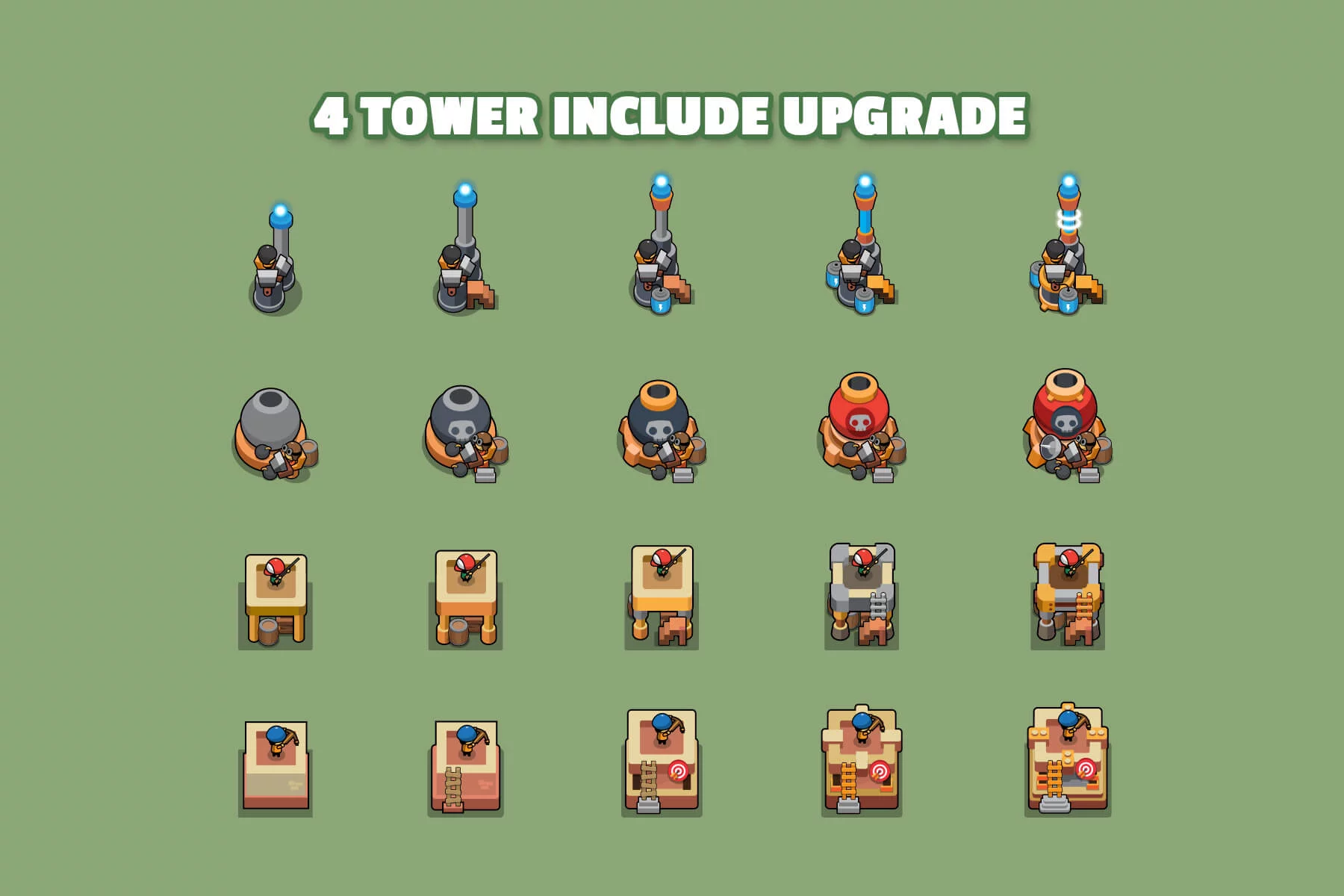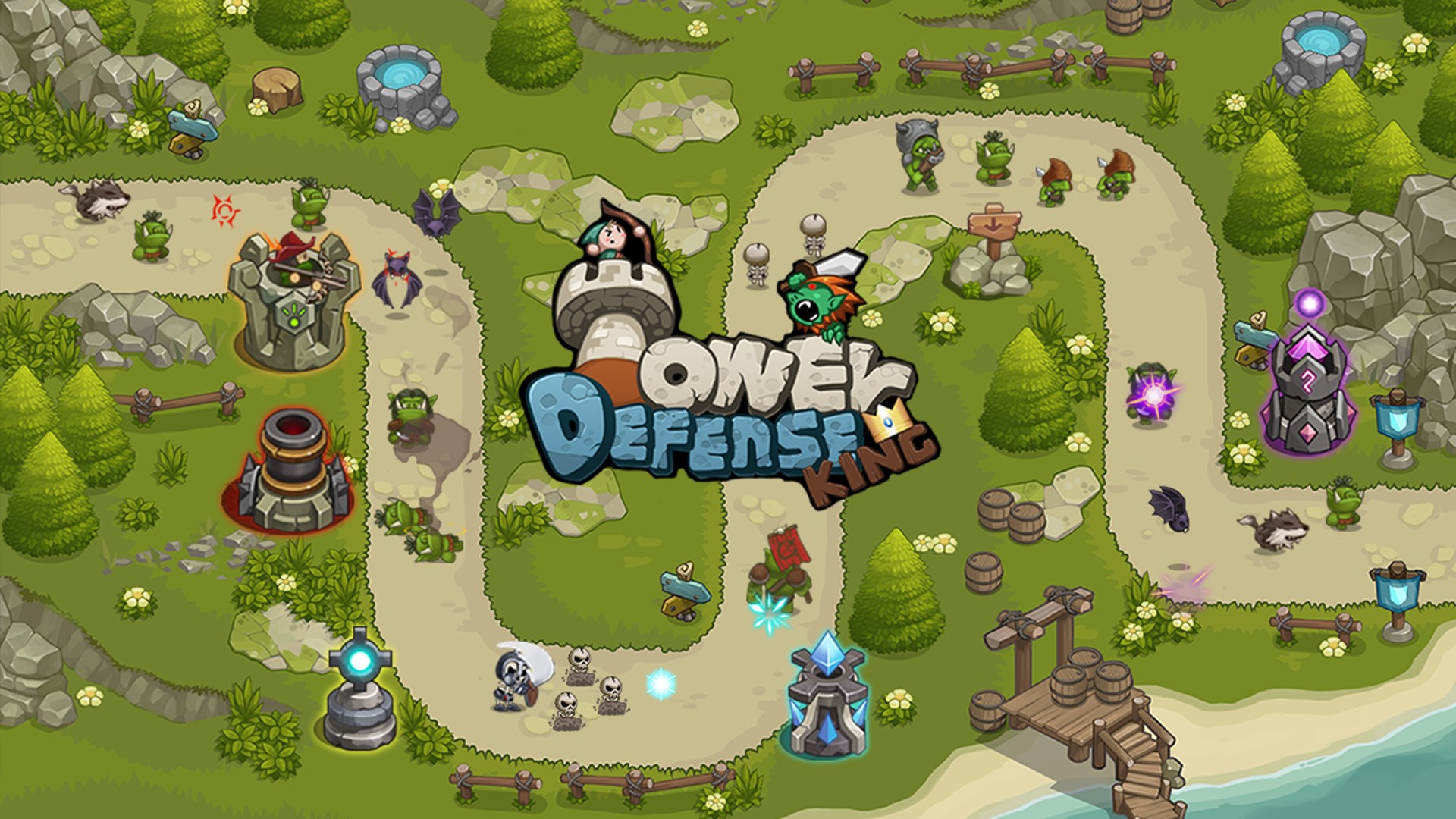Tower defense games stand as a captivating subgenre of strategy video games, where the core objective revolves around defending territories or possessions by obstructing enemy attackers using defensive structures. This introduction to tower defense games will explore their origins, fundamental mechanics, and why they continue to engage millions worldwide. Whether you’re a seasoned strategist or new to the genre, discover what makes these games a beloved challenge that tests the limits of your tactical prowess and creativity.
Core Mechanics of Tower Defense Games
In the realm of strategy games, tower defense games stand out for their unique blend of planning, strategy, and real-time tactics. At the heart of every tower defense game lies the fundamental challenge: to stop a horde of incoming enemies, known as “creeps,” from reaching a designated point on the map. Players must strategically place and upgrade various types of defensive towers along the path of the enemies. The core mechanics of these games revolve around resource management, tower placement, and wave control.
Resource management is a critical aspect, as players begin with a limited amount of resources to build towers. Choosing the right type and mix of towers is essential for success. Resources are typically earned by defeating creeps, and this currency can then be used to purchase or upgrade towers. The strategic depth of tower defense games is further enhanced by the need to balance offensive capabilities with the cost of towers. Upgrades can drastically improve a tower’s effectiveness, making decisions on when and what to upgrade a key strategic consideration.
Another crucial element is wave control. Each level consists of several waves of creeps, each wave usually stronger than the last. Players must anticipate the composition of waves and position their towers accordingly. Some towers may be particularly effective against certain types of creeps but less so against others, introducing a layer of strategy in tower selection and placement. Mastery over tower defense games comes from understanding the synergies between different towers and leveraging them to create impenetrable defenses.
Advanced Strategies in Tower Defense Games
Diving deeper into the mechanics, experienced players often employ advanced strategies such as tower “mazing.” This technique involves placing towers in a way that lengthens the path enemies must take, effectively increasing the time they are under fire. Mazing requires a profound understanding of game mechanics and map layout, showcasing the strategic complexity tower defense games can offer.
Exploring Tower Placement and Enemy Pathing
Understanding the nuances of enemy pathing is pivotal for optimizing tower placement. Skilled players analyze the map to identify choke points, high ground advantages, and optimal spots that maximize a tower’s firing time on enemies. This level of strategic planning distinguishes between novice and advanced players, making tower defense games both challenging and rewarding.
| Tower Type | Strength | Weakness |
|---|---|---|
| Artillery | High area damage | Slow firing rate |
| Sniper | Long range | Low area damage |
| Freeze | Slows enemies | No damage |
| Laser | Continuous damage | High resource cost |
| Missile | High single-target damage | Slow to reload |
Understanding Tower Defense Games: A Blend of Strategy and Entertainment
Tower Defense games represent a unique and engaging genre within the strategy gaming category, captivating players with a blend of strategic planning and real-time action. These games task players with defending a base or pathway against waves of incoming enemies by strategically placing and upgrading towers or defensive units along the enemy’s path. The core objective is to prevent these enemies from reaching a certain point on the map, with success heavily reliant on the player’s ability to manage resources, plan defensive strategies, and adapt to escalating challenges.
The appeal of Tower Defense games lies in their simple yet deep gameplay mechanics. Players must not only decide which types of towers to place but also consider their placement, timing, and upgrades. This requires a keen sense of strategy, as making the wrong decision can lead to quick defeat. Furthermore, the diversity of tower types and enemy units introduces a layer of complexity and replayability, as players experiment with different strategies to overcome challenges.
Another critical aspect of Tower Defense games is the progression system. As players advance through levels, they are often rewarded with new towers, upgrades, and abilities, which can dramatically alter gameplay. This progression not only keeps the game fresh but also encourages players to adapt their strategies to the evolving threats. The satisfaction of mastering a level that once seemed unbeatable is a testament to the game’s depth and the player’s strategic growth.
- Strategic Planning: Choosing the right towers and placements.
- Resource Management: Balancing the cost of building and upgrading towers.
- Adaptability: Adjusting strategies in response to new enemy types and challenges.
- Progression: Unlocking new towers and abilities to strengthen defenses.
- Replayability: Experimenting with different strategies for higher scores or faster completion times.
In conclusion, Tower Defense games offer a rich and engaging experience that combines strategic depth with the thrill of real-time action. Whether you’re meticulously planning your defenses or hastily adapting to an unexpected enemy wave, these games provide a rewarding and entertaining journey for both casual and hardcore gamers alike. Their enduring popularity underscores the genre’s ability to challenge the mind and captivate the imagination, ensuring their place in the hearts of strategy game enthusiasts around the world.
Evolution of Tower Defense Genres
The tower defense genre has undergone significant transformation since its inception, evolving from simple, sprite-based games to complex, multi-layered experiences that challenge the strategic depth of players. Initially popularized through custom maps in real-time strategy games, tower defense quickly branched out as a standalone genre. Early examples were often found in StarCraft custom maps, where the basic premise of defending a base against waves of enemies using strategically placed towers was established.
As technology advanced, so did the complexity and variety within the genre. Developers began to experiment with various themes, settings, and gameplay mechanics, leading to the birth of numerous sub-genres. For instance, some games introduced RPG elements, allowing players to upgrade and personalize their towers or even control a hero unit on the battlefield. Others incorporated elements of puzzle games, requiring more than just strategic placement of towers but also the right combination and timing of abilities. The introduction of mobile gaming platforms further diversified the tower defense genre, with touch controls offering a new way to interact with the game, making the genre more accessible and engaging to a wider audience.
The evolution of the tower defense genre reflects a blend of creativity and technological advancement. Today, these games can offer in-depth storylines, beautiful graphics, and complex mechanics, appealing to both casual gamers and hardcore strategists. The genre has proven its lasting appeal, continuously adapting to new gaming trends and technologies.
- Introduction of hero units, adding RPG elements to the gameplay
- Incorporation of puzzle elements, enhancing strategic depth
- Expansion to mobile platforms, making games more accessible
- Integration of multiplayer features, adding competitive and cooperative modes
- Use of advanced graphics and storytelling, increasing immersion and engagement
Strategic Elements in Gameplay
Tower defense games are a subgenre of strategy video games where the goal is to defend a player’s territories or possessions by obstructing the enemy attackers, usually achieved by placing defensive structures on or along their path of attack. This genre offers a unique blend of strategy, tactics, and sometimes puzzle-solving, as players must effectively use resources to construct and upgrade towers that prevent waves of enemies from reaching a designated point on the map. The strategic element in these games lies in the player’s ability to make quick decisions regarding which types of towers to build, where to place them, and when to upgrade or sell them.
The complexity and appeal of tower defense games often come from the variety of enemies, each with its strengths and weaknesses, requiring players to think critically and adapt their strategies accordingly. For example, some enemies might be particularly susceptible to certain types of towers, while others might have abilities that allow them to bypass specific defenses. Choosing the right combination of towers, anticipating enemy waves, and reacting swiftly to unforeseen challenges are crucial aspects of the strategic gameplay.
Moreover, resource management plays a pivotal role in these games. Players are usually given a finite amount of resources to start with, and they must decide how to allocate these resources best. This might mean balancing between spending on new towers or upgrading existing ones. The decision-making process is critical, as poor choices can lead to defeat, while strategic planning can lead to satisfying victories.
Enhancing Strategic Depth in Tower Defense Games
Further enriching the strategic depth of tower defense games, developers often introduce special levels, abilities, and in-game events that challenge the player’s strategy and adaptability. These elements ensure that the gameplay remains engaging and that players are constantly tested on their ability to strategize under different circumstances.
- Understanding Enemy Patterns
- Resource Allocation and Management
- Strategic Placement of Towers
- Upgrading vs. Building New Towers
- Adapting to New Challenges and Enemy Types
Mastering Strategic Elements for Victory
Mastering the strategic elements in tower defense games requires a deep understanding of the game mechanics, enemy behaviors, and effective resource management. Players who can anticipate challenges and adapt their strategies accordingly will find greater success and enjoyment in these complex and rewarding games.
Key Types of Defensive Towers
In the realm of tower defense games, the diversity and strategic application of defensive towers form the cornerstone of gameplay. Understanding the key types of defensive towers can significantly enhance a player’s ability to plan and execute strategies effectively. Among these, the Arrow Tower is perhaps the most basic yet versatile, offering balanced damage at a moderate rate of fire. Highly adaptable, it serves as the backbone of any defense.
On the other end of the spectrum, the Cannon Tower specializes in dealing area damage, making it indispensable for controlling large groups of enemies. Though it operates at a slower rate of fire, the high impact of its attacks compensates by clearing swaths of adversaries with each shot. For enemies boasting high speed or stealth capabilities, the Magic Tower emerges as a crucial asset. Capable of targeting and neutralizing even the most elusive foes, its presence ensures that no enemy slips through unnoticed.
Moreover, the Ice Tower plays a strategic role in controlling the battlefield tempo, slowing down enemy advances and providing players with valuable time to reinforce their defenses or redirect their offensive strategies. Lastly, the specialized Anti-Air Tower addresses the challenge posed by airborne threats, offering a focused solution to a specific problem, thus highlighting the importance of tailored defense strategies in tower defense games.
Further Insights into Defensive Towers
Exploring the intricacies of defensive towers reveals a deeper layer of strategy inherent in tower defense games. Players must not only consider the type of tower but also its placement, upgrade paths, and synergy with other towers. This complexity adds a rich layer of strategy and decision-making, transforming each game session into a dynamic and engaging puzzle. Understanding the strengths and weaknesses of each tower type becomes crucial as players advance through levels, encounter diverse enemy types, and navigate through increasingly challenging scenarios.
Advanced Strategies in Tower Placement and Selection
Delving deeper into tower defense strategies, the importance of tower placement cannot be overstated. A well-placed tower can exponentially increase its effectiveness, leveraging natural choke points or maximizing its range. Similarly, selecting the right combination of towers to deal with specific enemy waves requires foresight and adaptability. Players must continually assess their strategy against evolving threats, ensuring their defense can withstand whatever challenges come next.
- Arrow Tower: Basic and versatile, ideal for initial defense strategies.
- Cannon Tower: Perfect for dealing area damage and controlling large groups.
- Magic Tower: Essential for targeting elusive or high-speed enemies.
- Ice Tower: Slows enemies, offering strategic control over the battlefield tempo.
- Anti-Air Tower: Specialized defense against airborne threats, filling a niche role.
Impact of Player Decision-Making
In the realm of tower defense games, the impact of player decision-making cannot be overstated. These games require players to strategically place defensive structures or units along a path to stop enemies from reaching a certain point or base. The choices players make, from the selection of towers to their placement and upgrades, significantly influence the game’s outcome. A well-thought-out strategy can mean the difference between victory and defeat. Players must not only consider the immediate effects of their decisions but also anticipate future waves of enemies and adapt their strategies accordingly.
One key aspect of player decision-making is resource management. Players are often given a limited amount of resources to build and upgrade their towers. Therefore, deciding how to allocate these resources becomes a critical element of gameplay. Players must balance the cost and benefits of each tower type against the various enemy types they will face. Additionally, the timing of upgrades can be crucial, as investing in them too early or too late might waste resources or leave the player unprepared for upcoming challenges.
Moreover, the choice of where to place towers on the map affects their effectiveness. Some towers may have long-range capabilities but slow firing rates, while others may deal high damage at close range. Players must consider these factors, along with the layout of the path enemies will take, to strategically position their towers for maximum efficiency. The ability to adapt to the evolving challenges presented by the game requires foresight, flexibility, and a deep understanding of game mechanics.
Further Insights into Decision-Making Strategies
Delving deeper into the intricacies of tower defense games reveals that successful players often employ a variety of strategies based on the specific challenges presented by each level. For instance, some levels may necessitate a focus on slowing down enemies to manage large groups effectively, while others might require a strategy that maximizes direct damage to fast-moving targets. Understanding the unique characteristics and vulnerabilities of enemy types is also paramount, enabling players to tailor their defenses to exploit these weaknesses. This level of strategic depth highlights the rich, engaging experience that tower defense games offer, where each decision can lead to distinctly different outcomes.
In conclusion, the strategic decision-making inherent in tower defense games offers a dynamic and engaging gameplay experience. Players’ success hinges on their ability to make informed decisions, manage resources effectively, and adapt to the challenges presented by the game. This complexity and depth are what make tower defense games enduringly popular and deeply satisfying to master.




